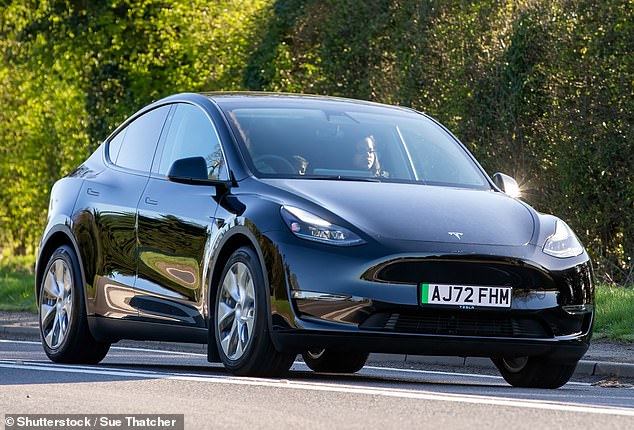
More than six million people live in areas where no public electric car charging points were installed in the final three months of 2023.
Analysis of the latest figures shows 75 constituencies in the UK had the same number at the end of last year as at the start of October.
In some areas where no more were installed, there are hardly any public charge points at all. In Bolton West, the number stayed stuck at 12 while there were six in Bootle in Liverpool and three in Castle Point in Essex and Sheffield Hallam.


Stuck in the slow lane: The stark figures will spark fresh concerns that Britain’s electric car revolution is being held back
The stark figures will spark fresh concerns that Britain’s electric car revolution is being held back by the lack of charging points as well as their uneven distribution.
The figures, published on the Government’s own website, show the London boroughs of Hammersmith, Westminster and Chelsea and Fulham alone boast more than one in ten of all UK public chargers.
And Westminster has more than six major cities in the North and Midlands combined.
Ian Plummer, at Auto Trader, said: ‘The rollout of Electric Vehicle infrastructure is in danger of becoming patchy and uneven, which won’t help the confidence of potential switchers if charging ‘deserts’ are allowed to develop.’
The Government wants 300,000 public charging points for electric installed by the end of the decade.
But at the start of this year, there were only 53,677. It will require around 110 to be installed every day to reach the target.
But in 2023, only 46 per day were installed.
Last year, Rishi Sunak pushed back a ban on selling new petrol and diesel cars from 2030 to 2035.
Making the switch from petrol and diesel has been hampered by the cost of EVs and travelling long distances amid ‘range anxiety’.
A Department for Transport spokesman said: ‘Public chargepoints [have increased] by 45 per cent since January 2023.
‘We will be providing £381million to support the rollout of tens of thousands of chargepoints and it is up to the local authorities to utilise this fund to meet demand.’








